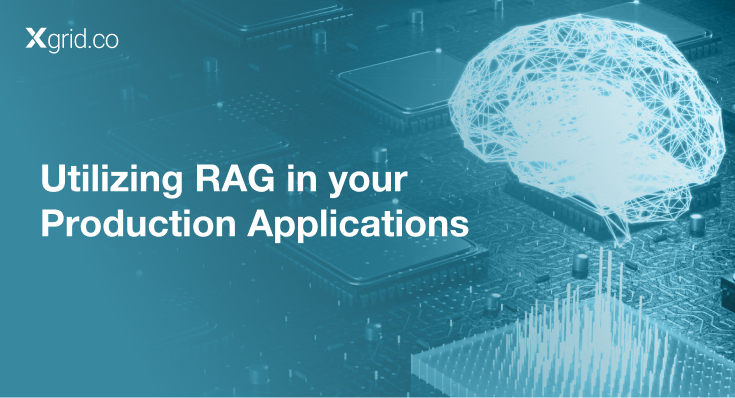Understanding Multi-Agent Systems and LLMs
These models are not only becoming more sophisticated but are also increasingly being deployed in complex environments that require collaboration among multiple agents. This synergy between multi-agent systems and LLMs opens up a plethora of possibilities for enhancing the capabilities and efficiency of AI applications.
Understanding Multi-Agent Systems and LLMs
Multi-Agent Systems (MAS) are systems composed of multiple interacting intelligent agents that can collaborate, negotiate, compete, or coordinate their actions to achieve certain goals. These agents can be autonomous or semi-autonomous and can include both software agents (e.g., chatbots, virtual assistants) and robotic agents.
Large Language Models (LLMs), on the other hand, are deep learning models trained on vast amounts of text data. They are designed to process, understand, and generate human language in a way that mimics human-like understanding.
The integration of MAS with LLMs allows for the development of more robust and adaptable AI systems. For example, in a customer service application, multiple LLM agents could specialize in different aspects of customer queries, such as product information, troubleshooting, and sales, providing a comprehensive service that adapts and learns from interactions.
Key Applications of Multi-Agent Systems in LLMs
- Enhanced Decision Making: By integrating multiple LLM agents, each trained on specialized data sets or tasks, a system can leverage their collective intelligence to make more informed and nuanced decisions.
- Scalability and Flexibility: Multi-agent systems can dynamically allocate tasks among different agents depending on the demand and complexity, thus improving the scalability and flexibility of services.
- Resilience through Decoupling: In critical applications like healthcare or finance, decoupling different agents can enhance system resilience. By isolating the responsibilities and functions of each agent, the failure of one does not cripple the entire system, allowing for more robust and maintainable architectures.
- Simulated Environments and Training: Multi-agent systems can be used to create more dynamic and realistic training environments for LLMs, which can learn from interactions with other agents in simulations.
Implementation Strategies for Multi-Agent Systems in LLMs
Implementing multi-agent systems within large language models involves several detailed strategies that can optimize performance and efficiency:
Agent Specialization
Agent specialization is a pivotal strategy in the development of multi-agent LLMs. It involves tailoring individual agents within the system to excel in distinct domains or tasks. This section will explore the concept of agent specialization by discussing its methodology, benefits, and potential applications in greater detail.
Methodology of Agent Specialization
- Targeted Training:
- Domain-Specific Data: Specialization can be achieved by training an agent on a dataset that is highly relevant to a specific domain, such as legal texts, medical journals, or technical manuals. This approach ensures that the agent develops a deep understanding of the language, terminology, and nuances pertinent to that field. For instance, a legal-focused agent would become proficient in legal jargon and the specific context of legal documents, enabling it to offer precise and relevant responses.
- Task-Specific Data: Similarly, agents can be specialized by training them on data that exemplify a specific task, such as summarization, question-answering, or translation. This training helps agents master the specific skills needed for these tasks. For example, an agent specialized in summarization would learn to distill large volumes of text into concise, accurate summaries, enhancing its utility in applications like news aggregation or academic research.
- Fine-Tuning Pre-trained Models:
- Adaptation Layer: Adding an adaptation layer to a pre-trained model allows the agent to fine-tune its responses based on the specialized data. This layer modifies the base model’s output to better align with the specific expectations and requirements of the domain or task. For example, a healthcare agent could have an adaptation layer that refines its ability to interpret and respond to medical queries, ensuring that its outputs are clinically accurate and contextually appropriate.
- Continual Learning: Agents can also engage in continual learning, where they are periodically updated with new data from their specialized domain. This keeps the agent current with the latest developments and terminology in its field. For instance, a financial analysis agent could continuously integrate new financial reports and market data, maintaining its relevance and accuracy in the fast-paced financial sector.
Benefits of Agent Specialization
- Improved Accuracy: By focusing on a specific domain or task, agents can achieve higher levels of accuracy. They are less likely to generate irrelevant or incorrect responses, as their training has equipped them with a deep understanding of the subject matter. For example, a specialized medical agent will be more accurate in interpreting symptoms and suggesting possible diagnoses compared to a general-purpose model.
- Increased Efficiency: Specialized agents can process queries and generate responses more quickly within their domain. Their familiarity with specific types of data reduces the need for broad contextual inference, leading to faster response times. For example, a technical support agent specializing in network issues can quickly identify and suggest solutions without needing to parse through unrelated information.
- Scalability: Specialization allows for the scaling of multi-agent systems by distributing different tasks or domains among various specialized agents. This distribution enables handling a higher volume of queries simultaneously. For example, in a large customer service operation, having agents specialized in different areas (like billing, tech support, and product information) allows for more efficient handling of a diverse range of customer inquiries.
Communication and Coordination Mechanisms:
- Implementing effective communication channels between agents is crucial. Agents must be able to share insights, decisions, and data seamlessly.
- Coordination mechanisms such as shared goals, negotiation protocols, or consensus algorithms ensure that agents work harmoniously towards common objectives.

Scalability in Multi-Agent Systems
Scalability is a critical feature for multi-agent large language model (LLM) systems, particularly because these systems often need to handle varying loads and complex tasks across multiple domains. To achieve scalability, systems can be designed using several architectural strategies:
- Cloud-Based Architectures:
- Dynamic Resource Allocation: Leveraging cloud platforms allows multi-agent systems to utilize scalable resources. Cloud providers typically offer on-demand resource allocation, meaning computing power, storage, and other resources can be dynamically adjusted to meet the current needs of the system without the need for physical hardware investments. This approach helps in handling large-scale deployments and experimenting with and scaling new models or features quickly. For instance, if an application suddenly experiences a spike in traffic, cloud-based architectures can automatically allocate additional resources to manage the load effectively.
- Microservices Architecture:
- Independent Deployment: By decomposing a large system into smaller, independently deployable services, each agent in a multi-agent system can run as a separate microservice. This modularity allows specific components of the system to be scaled independently based on demand. For example, a computation-heavy agent can be allocated more resources without having to scale the entire system. Microservices also facilitate easier updates and maintenance without disrupting the entire system. This is crucial for scenarios where certain functionalities need to be updated or scaled without affecting other services.
- Containerization and Orchestration:
- Consistent Deployment: Technologies like Docker and Kubernetes play a vital role in the scalability of multi-agent systems. Containers encapsulate the runtime environment of an agent, making it easy to deploy across various environments consistently. Orchestration tools help in managing these containers effectively, allowing for automatic scaling, load balancing, and self-healing capabilities. For instance, Kubernetes can automatically manage the distribution and scaling of containers across a cluster, ensuring optimal performance and resource utilization.
- Elastic Scaling:
- Real-Time Resource Management: Some systems implement elastic scaling strategies where resources are automatically scaled up or down based on real-time usage metrics. This ensures that the system remains efficient both in terms of cost and performance. For example, if a particular agent’s demand increases during peak hours, additional instances of that agent can be automatically deployed to handle the increased load, and they can be scaled down when the demand decreases.
Deployment Strategies for Multi-Agent Systems
Deployment of multi-agent systems involves several considerations to ensure that the system performs optimally across different operational environments. Key deployment strategies include:
- Environment Agnostic Design:
- Flexible Integration: Designing agents to be environment agnostic helps reduce the friction during deployment in diverse environments. This involves abstracting the core functionalities of the agents from the underlying infrastructure. For instance, an agent designed to work in various cloud environments should not rely on specific features of a single cloud provider, allowing for seamless deployment across different platforms.
- Continuous Integration and Continuous Deployment (CI/CD):
- Automated Testing and Deployment: Implementing CI/CD pipelines for multi-agent systems ensures that changes to any agent or the overall system are automatically tested and deployed in a controlled and systematic manner. This helps in maintaining system integrity and the quick deployment of new features or bug fixes. CI/CD pipelines automate the build, testing, and deployment process, minimizing the risk of errors during deployment and speeding up the release cycle.
- Configurability and Customization:
- Adaptable Systems: Given the varying constraints and requirements of different deployment environments, it is crucial to build systems that are highly configurable. This allows for adjustments in system behavior based on local regulations, available resources, or specific operational goals. For example, an agent might need to comply with different data retention policies depending on the region it is deployed in, which can be managed through configuration settings.
- Monitoring and Logging:
- Performance Tracking: Effective deployment strategies must include robust monitoring and logging mechanisms to track the performance and health of each agent and the system as a whole. This data is vital for troubleshooting issues, understanding system behavior under different conditions, and making informed decisions regarding scaling. Tools like Prometheus for monitoring and ELK (Elasticsearch, Logstash, Kibana) stack for logging provide insights into system performance and help in diagnosing and resolving issues quickly.
- Security and Compliance:
- Data Protection: Security measures need to be integrated into the deployment strategy, especially when dealing with sensitive or personal data. Compliance with local data protection regulations (such as GDPR in Europe or CCPA in California) is crucial. This includes implementing secure communication protocols, encrypting sensitive data, and regularly auditing the system for vulnerabilities to ensure compliance and protect user data.
By focusing on these scalability and deployment strategies, multi-agent LLM systems can be effectively tailored and optimized for a wide range of applications and environments, ensuring both flexibility and robust performance. This holistic approach not only enhances the capability to manage varying loads and complex tasks but also ensures that the systems can be adapted to different operational needs with minimal disruption.
By strategically implementing these aspects, multi-agent systems in LLMs can achieve greater functionality and utility, paving the way for more intelligent, adaptable, and robust AI applications .





